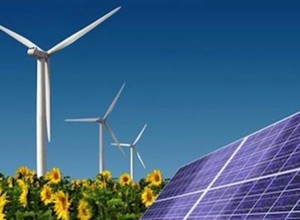(di Anthony Brown) – By dint of brooding on the strategic importance of the energy market, I pored over reports and analysis because I felt it was time for me to go more in depth on how it could affect our European existence and understand what kind of decisions regulators and politicians were taking for my future welfare.
We are all very much aware of the geopolitical risks related to import dependency, and the harmful environmental consequences of fossil fuel based energy generation as long as Climate Change, along with an increasing dependency on energy imports are only a few of the risks the European economy is facing today. Despite serious gas supply crises that have acted as a wake-up call, exposing Europe’s vulnerability, there is still no common approach towards partner, supplier or transit countries. (See also COM(2010) 639 final Energy 2020 A strategy for competitive, sustainable and secure energy http://www.energy.eu/directives/ com-2010-0639.pdf).
It is a fact that energy from carbon sources consumption growth is slowing, and falling increasingly behind GDP growth. This means that world economies are beginning to adapt to the use of alternative and renewable energy sources. The share of energy in the GDP of Western countries will continue to fall. We hope that alternative energy sources will be able to meet the world’s growing energy needs in a near future: but their share in the energy balance will only increase modestly if not supported by a correct financial framework and a strategic planning. These targets have to serve as important catalysts in building consensus on ways of ensuring energy security within the EU framework and helping the EU27 Countries shape the world of the future generation enhancing the quality of their energetic consumption.
In the next decade, developed consumer countries will give high priority to alternative and renewable sources of energy. Today, this is one of the most dynamic segments of the energy sector. These include wind and hydroelectric power, as well as solar. Large-scale projects will begin to surface. Investment in alternative types of energy is expected to come mainly from the United States, China, Europe and Japan, as well as from the world’s oil and gas majors – BP, ExxonMobil, Royal Dutch/Shell, and others. New technology will help make energy consumption more effective. The production cost of a kilowatt-hour generated by wind power, for example, is one fifth of what it was 20 years ago. Over the past 5 years alone, costs have been reduced by 20%. The cost of delivering a kWh of electricity from a “state of the art” wind turbine in optimal wind conditions is 3,7 eurocents (source: Wind Force 12, EWEA 2002). Unlike most conventional energy sources, the cost of producing energy from renewable energy sources will decrease dramatically in the future, given the right conditions. (See also http://www.erec.org/fileadmin/erec_docs/Projcet_Documents/EUREES/DEFINITIF_EXPORT.pdf).
The uncertainity of the military-political situation in the Middle East (especially around Iran, which is being closely watched by virtually all Russian gas consumers in Europe) creates a risky environment for investors, slowing down the implementation of Western plans to build new energy corridors.
All these elements create an obligation for regulators to take into account the impact of their decisions on the EU internal market as a whole. This means they should not evaluate investments solely on the basis of benefits in their Member State, but on the basis of EU-wide benefits. Still, tariff setting remains nationally focused and key decisions on infrastructure interconnection projects are taken at national level. National regulatory authorities traditionally have aimed mainly at minimising tariffs, and thus tend not to approve the necessary rate of return for projects with higher regional benefit or difficult cost-allocation across borders, projects applying innovative technologies or projects fulfilling only security of supply purposes. (http://ec.europa.eu/energy/publications/doc/2011_energy_infrastructure_en.pdf ).
In recent years, in order to reduce greenhouse emissions as well as increase energy security, a growing number of countries have established targets for renewable energy. These are either expressed in terms of installed capacity or as a percentage of energy consumption. In most EU member states electricity utilities now buy electricity generated from renewable sources produced by individuals and companies. Prices paid for ‘self-produced’ electricity is called a feed-in tariff. Prices are in euros per kilowatt-hour (€/kWh). ‘0.29-0.46’ is a price range from 0.29 €/kWh to 0.46 €/kWh, depending on the amount produced (Data from http://www.energy.eu/).
At the heart of these is a reliable, bankable support scheme for renewable projects which provides long term stability and certainty (The Support of Electricity from reewable Energy Sources, EUROPEAN COMMISSION, 2005).
Bankable support schemes result in lower cost projects because they lower the risk for both investors and equipment suppliers. The cost of wind-powered electricity in Germany is up to 40% cheaper than in the United Kingdom (See above report, p. 27, Fig. 4) for example, because the support system is more secure and reliable.
In terms of access to the grid, the RES Directive stipulates that Member States should develop transmission and distribution grid infrastructure, intelligent networks, storage facilities and the electricity system generally, so as to accommodate the further development of electricity production from renewable energy sources, which includes interconnection between Member States and between Member States and third countries. The Directive on the promotion of the use of energy from renewable sources (2009/28/EC, RES Directive) sets the objective of reaching 20% of the EU’s energy consumption through renewable energy sources by 2020. It sets mandatory national targets for the overall share of RES in gross final consumption of energy, as well as a mandatory share of 10% RES in transport for each Member State.
We need to take our international cooperation on energy technology to a new dimension. The measures proposed in the SET-Plan (e.g. the Steering Group, European Industrial Initiatives and the European Energy Research Alliance) should bring about a reinforced international cooperation strategy. We also need to ensure that the EU increasingly speaks with one voice in international fora, and strategic planning.
Several steps and measures to fulfil coordination on EU level have already been taken by the EU commission. The most recent step is the proposal on regulations for energy infrastructure that was published on the 19th of October 2011 [EC 2011].
Nonetheless, the activities of the EU commission and its related institutions need the input and the support from national governments as well as national system operators and regulators. Ultimately, the implementation of activities has to be pushed on national level since the national stakeholders are required to translate the actions from EU level to national- and local level and integrate them into their respective planning procedures.
As energy is the fuel of Europe’s economic engine, by switching from fossil fuel, greenhouse gas intensive sources of energy to renewable sources of energy, Europe is able to fully grasp its sustainable potential – in economic, ecologic and social terms.
-
In primo piano
 Gli Stati Uniti non sono responsabili del terrorismo...
Gli Stati Uniti non sono responsabili del terrorismo...
7 febbraio, 2017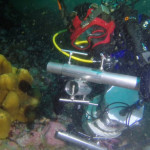 I fondali dell'Antartide sono un mondo che non ti aspetti:...
I fondali dell'Antartide sono un mondo che non ti aspetti:...
29 febbraio, 2016 Discussing Europe with Ms Federica Mogherini
Discussing Europe with Ms Federica Mogherini
17 settembre, 2015
Articoli Recenti
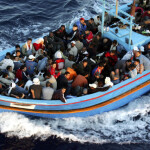 Immigrazione e Nazione
Immigrazione e Nazione
15 novembre, 2024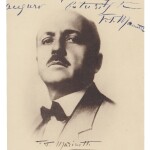 Filippo Tommaso Marinetti ed il movimento futurista
Filippo Tommaso Marinetti ed il movimento futurista
23 maggio, 2023 Italiani e Francesi “cugini” litigiosi per seri ma anche per futili motivi
Italiani e Francesi “cugini” litigiosi per seri ma anche per futili motivi
6 maggio, 2023 Don Antonino Collurafi da Librizzi, maestro di “broglio” a Venezia
Don Antonino Collurafi da Librizzi, maestro di “broglio” a Venezia
23 aprile, 2023 L'affare Bolo Pascià: un episodio dello spionaggio italiano della Grande guerra
L'affare Bolo Pascià: un episodio dello spionaggio italiano della Grande guerra
19 aprile, 2023
I più letti
 La Folgore intona il canto degli Arditi e la stampa italiana lo etichetta inno fascista – I vertici militari aprono un'inchiesta
La Folgore intona il canto degli Arditi e la stampa italiana lo etichetta inno fascista – I vertici militari aprono un'inchiesta
31 luglio, 2014 Il COCER sui marò: chiediamo di parlare con il Presidente del Consiglio Matteo Renzi
Il COCER sui marò: chiediamo di parlare con il Presidente del Consiglio Matteo Renzi
25 giugno, 2015 Il Ramadan (30 giorni di digiuno, secondo pilastro dell'Islam)
Il Ramadan (30 giorni di digiuno, secondo pilastro dell'Islam)
12 agosto, 2013 Vasco Rossi con il tour “Live Kom '014” a Roma e Milano
Vasco Rossi con il tour “Live Kom '014” a Roma e Milano
29 ottobre, 2013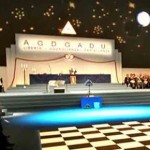 Il segreto della Massoneria è la comunicazione
Il segreto della Massoneria è la comunicazione
12 luglio, 2017





 10 Ago 2012
10 Ago 2012
 Inviato da Clara Salpietro
Inviato da Clara Salpietro 


